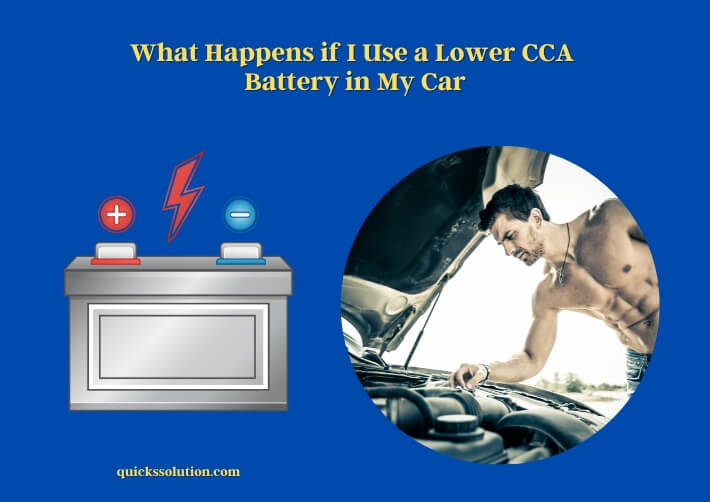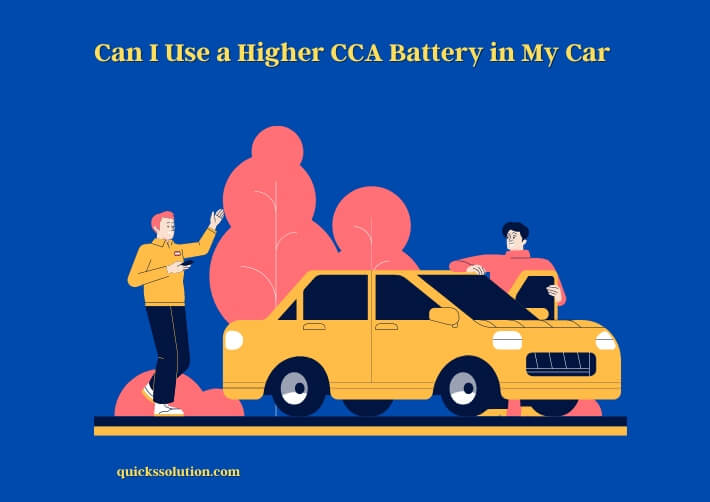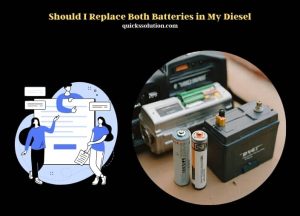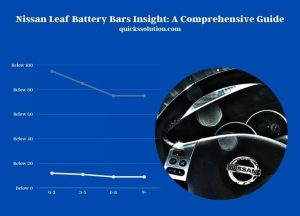Published on: July 11, 2023
Written by Amlan Roy / Fact-checked by Hashim Manna
If you use a lower CCA (Cold Cranking Amps) battery in your car, it may not provide enough power for starting, especially in cold weather. This can lead to hard starts or the inability to start the engine at all.
CCA in batteries is an essential parameter that determines the amount of current a battery can provide at 0°F (-18°C) for 30 seconds while maintaining at least 7.2 volts. The higher the CCA, the better the battery can start an engine in cold weather. So, a 750 CCA battery will generally perform better than a 650 CCA one, particularly in colder climates.

Using a lower CCA battery can lead to issues like hard starts, as already mentioned, and other low CCA battery symptoms such as slow cranking, dim headlights, or a dying battery. On the other hand, installing a higher CCA battery in your car can give your engine a better start capacity, especially in cold conditions.
The same principle applies to lower AH (Ampere-hour) batteries. Putting a lower AH battery in your car might cause it to drain faster and not provide enough current over an extended period. Replacing your car’s battery with the wrong type, whether it’s lower CCA, AH, or incorrect size, can lead to issues that can affect the performance of the vehicle.
When the time comes to replace the battery, knowing what CCA to choose is critical. A battery with CCA that matches or exceeds the car manufacturer’s recommendation should be selected. In essence, while a higher CCA battery might be better in some cases, it is essential to consider your vehicle’s specifications and needs.
Impact of Using Lower CCA Battery
Potential Start-up Issues
Every vehicle comes with a set minimum CCA requirement, specified by the manufacturer. Opting for a battery with a lower CCA could result in start-up problems. The primary function of the CCA is to provide power to start the engine, particularly in cold weather. A lower CCA battery may lack the necessary power, causing the vehicle to have a hard time starting, or worse, it may not start at all.
Cold Weather Start
Cold weather conditions exacerbate this issue as lower temperatures increase the power required to start the vehicle. Therefore, a lower CCA battery might not cope well, especially in freezing climates.
Dim Lights and Slow Cranking
Other noticeable low CCA battery symptoms might include dim car lights and slow engine cranking. These occur due to the insufficient power supplied by the battery.
The Importance of Ampere-Hours (AH)
A battery’s capacity is measured in amp-hours (AH). The higher a battery’s AH, the greater its capacity, meaning it can supply a steady current over a longer period.
Faster Drain with Lower AH
If you put a lower AH battery in your car, it is likely to drain faster because it lacks the capacity to sustain the necessary current over an extended period. This fast drain could leave you with a dead battery at inopportune times.
Unstable Supply
A lower AH might also lead to an unstable power supply, affecting various components of the vehicle that rely on the battery, such as the lights, the stereo, and the charging systems.
Selecting the Correct Battery
Replacing the battery in your vehicle isn’t merely about choosing a battery with a higher or lower CCA or AH. It’s about selecting a battery that meets the vehicle’s requirements. The wrong battery, be it lower in CCA, AH, or the wrong size, can cause problems that can impact your vehicle’s performance.
Assessing Vehicle Specifications
Consider your vehicle’s specifications and needs while selecting a battery. Choose a battery with a CCA and AH that match or exceed the vehicle manufacturer’s recommendations.
Effect of Higher CCA Batteries
While a higher CCA battery might seem to be a superior choice, remember that it’s not always the case. Exceeding the recommended CCA might provide better cold-start performance but can lead to complications like overloading the vehicle’s electrical system.
In the realm of batteries, there isn’t a one-size-fits-all solution. An optimal choice is one that meets the vehicle’s requirements, ensuring it runs efficiently and reliably.
Can I Use a Higher CCA Battery in My Car

Impact on Starting Power
The question of using a higher CCA battery in your car brings us to the discussion of starting power. The CCA rating, or Cold Cranking Amps, indicates how much power the battery can provide to start the engine in cold conditions. Using a battery with a higher CCA rating than recommended by the manufacturer can provide more starting power, which is particularly helpful in colder climates.
Improved Cold-Start Performance
A battery with a higher CCA will improve the cold-start performance of your vehicle. It can deliver more power at zero degrees Fahrenheit, which aids in starting your engine during harsh winter conditions.
Potential Overloading
Despite the benefits, there are potential drawbacks to using a higher CCA battery in your car.
Strain on Electrical System
A higher CCA battery might put additional strain on your vehicle’s electrical system. While this isn’t typically a problem for most modern vehicles, older models with less robust electrical systems may experience issues.
Can I Put a Lower Ah Battery in My Car

Battery Life Expectancy
The Ampere-hour (Ah) rating of a battery denotes its capacity, meaning how long it can supply power. Using a lower Ah battery might limit the lifespan of the battery in your car.
Faster Battery Drain
A lower Ah battery tends to drain faster. This is because it has less capacity to sustain the necessary current over an extended period, resulting in the battery getting depleted quicker than a higher Ah battery.
Effects on Car Components
A lower Ah battery can impact the various components in your car that rely on the battery for power.
Compromised Functionality
With a lower Ah battery, the functionality of various electronic systems in your vehicle may be compromised due to the lower power supply. This includes systems like the lights, stereo, and charging systems.
Risk of Dead Battery
Since a lower Ah battery has a smaller capacity, there’s a higher risk of being left with a dead battery. This can be particularly troublesome if it happens while you’re on the road. It’s crucial to bear these factors in mind and consider the implications before opting for a lower Ah battery for your vehicle.
Frequently Asked Questions (FAQs)
Is a Higher CCA Battery Better?
A higher CCA battery is generally better for cold-start performance as it can provide more power. However, it may put more strain on older vehicles’ electrical systems. The best battery matches the vehicle’s recommended specifications.
What Are Some Low CCA Battery Symptoms?
Symptoms of a low CCA battery include hard starts, slow engine cranking, and dim lights. In colder climates, the vehicle may fail to start altogether.
What Does CCA Mean?
CCA stands for Cold Cranking Amps. It measures a battery’s ability to start an engine in cold temperatures, specifically the amount of current a battery can provide at 0°F (-18°C) for 30 seconds while maintaining at least 7.2 volts.
How Many Amp Hours is a Typical Car Battery?
A typical car battery is usually between 45 to 100 amp hours. This number refers to the amount of current the battery can provide over an extended period.
Are There Differences Between a 650 CCA Battery and Higher CCA Batteries?
Yes, a 650 CCA battery will have less starting power in cold conditions compared to higher CCA batteries. This might make a noticeable difference in colder climates where more starting power is needed.
Why Should I Pay Attention to the Car Battery Rating?
Paying attention to the car battery rating, which includes the CCA and Ah values, can help you select a battery that matches your vehicle’s requirements and ensure optimal performance and longevity.
Relevant Resources:




